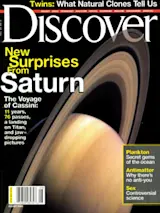Some 3.5 billion years ago, a single-celled organism now named LUCA (for the Last Universal Common Ancestor of all life on Earth) developed the ability to pull oxygen out of its environment. Although LUCA is long gone, University of Hawaii microbiologist Maqsudul Alam has taken a step toward understanding the secret behind this world-changing feat of chemical engineering.
LUCA evolved in an oxygen-free, or anaerobic, environment. But as oxygen levels rose in the ocean and atmosphere, the cell had to develop a way to neutralize what was, in essence, a poison. Alam hit on that defense while studying archaea—another type of primitive, single-celled creature. Alam studied two species of archaea, one aerobic and the other anaerobic. He isolated a crucial compound called protoglobin that protects anaerobic species of archaea from the toxic effects of oxygen. “Protoglobin is the nose and the hand of the archaea,” he says. “It senses oxygen, ...














